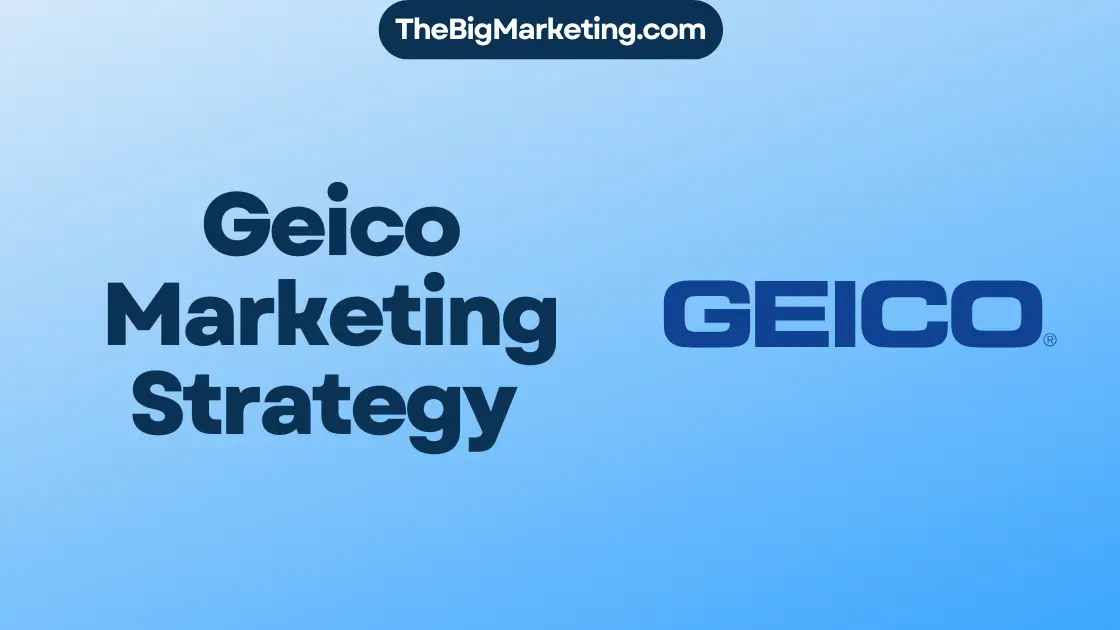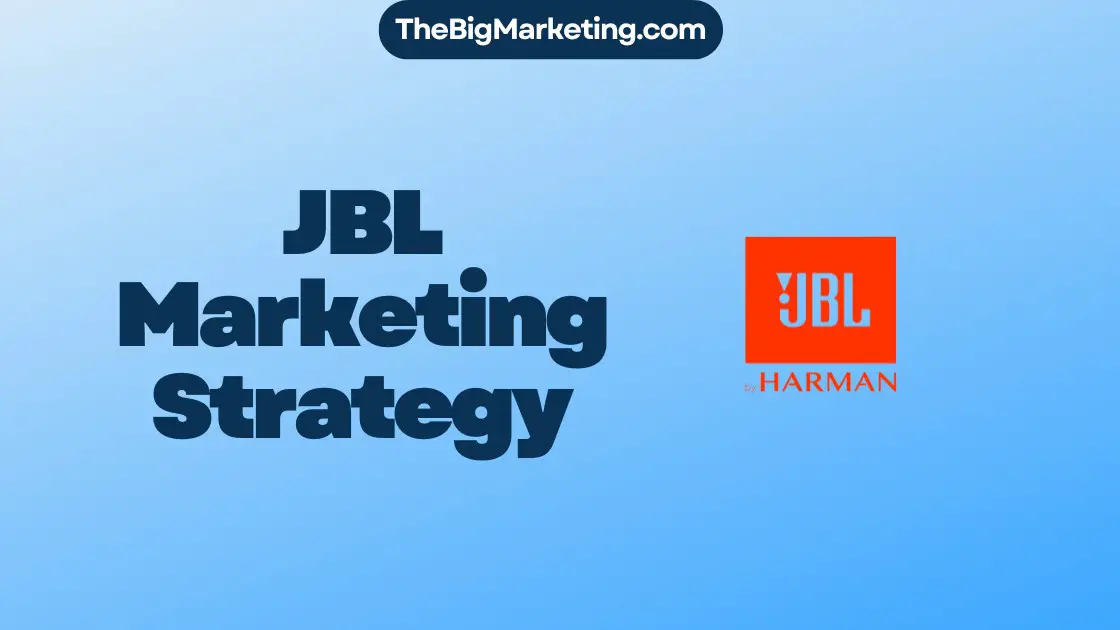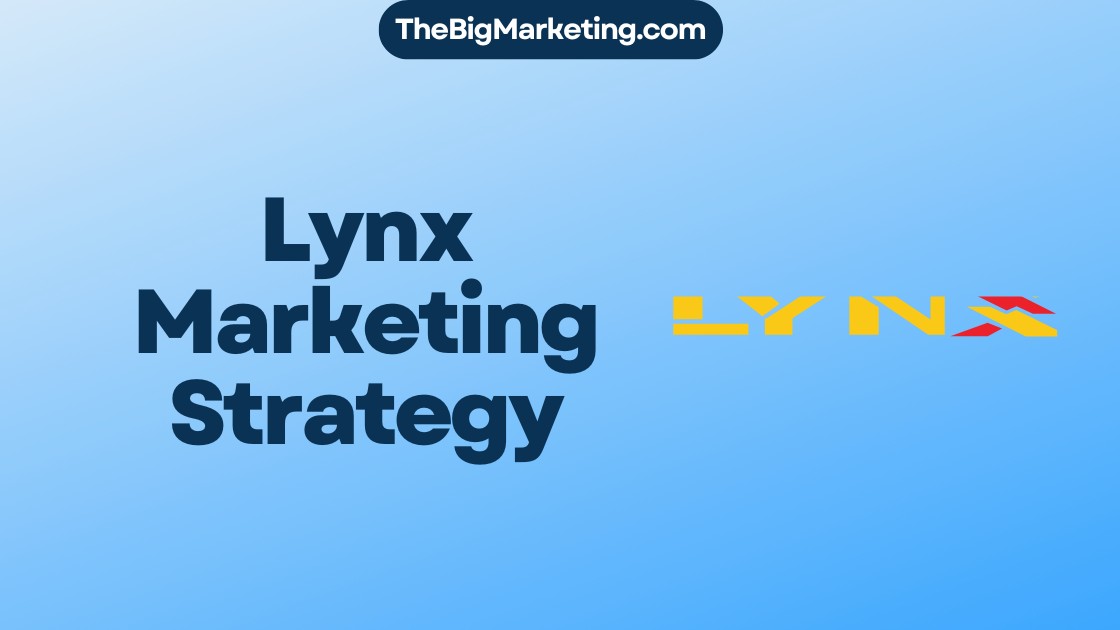CGI Group, a global leader in IT and business consulting services, has implemented a dynamic marketing strategy to drive digital transformation and targeted business growth in the competitive US market. With a focus on innovation, strategic solutions, and effective techniques, CGI Group has positioned itself as a frontrunner in the industry.
In this case study, we will explore CGI Group’s comprehensive marketing approach and the significant impact it has made on their business. From digital transformation to successful partnerships and the rise of CGI in advertising, we will delve into the strategies and tactics that have propelled CGI Group’s growth and success.
Key Takeaways:
- CGI Group has implemented a marketing strategy to drive digital transformation and targeted business growth in the US market.
- Their approach focuses on innovation, strategic solutions, and effective techniques to achieve their business objectives.
- Successful partnerships with organizations such as Iberdrola, Beneva, and BBC News have contributed to CGI Group’s growth and transformation.
- The rise of CGI in advertising has revolutionized the industry, providing businesses with greater creative freedom, flexibility, and cost-effectiveness.
- CGI advertising offers small to medium businesses an opportunity to compete with larger companies by providing cost-effective solutions and greater reach and engagement.
Digital Transformation and Targeted Business Growth
CGI Group’s marketing strategy is centered around digital transformation and targeted business growth. By leveraging a digital marketing approach, CGI aims to effectively connect with its target audience and enhance brand awareness. This involves implementing innovative and effective marketing techniques to optimize their marketing efforts.
The Digital Marketing Approach
CGI Group adopts a comprehensive digital marketing approach that emphasizes leveraging digital channels and technologies to reach and engage their target audience effectively. Through strategic planning and execution, they leverage the power of digital platforms to optimize their marketing campaigns and drive desired results.
The Targeted Marketing Strategy
CGI Group recognizes the importance of a targeted marketing strategy in capturing the attention and interest of specific demographics. By tailoring their marketing efforts to align with the preferences and behaviors of their target audience, they can maximize the impact of their marketing initiatives and increase the likelihood of generating desired outcomes.
Effective Marketing Techniques
Throughout their marketing endeavors, CGI Group employs a range of effective marketing techniques to drive business growth. This includes utilizing data-driven insights to inform decision-making, implementing personalized marketing campaigns to enhance customer engagement, and adopting performance-based strategies to optimize marketing performance and allocate resources efficiently.
By combining a digital marketing approach with a targeted marketing strategy and effective marketing techniques, CGI Group is well-positioned to achieve digital transformation and foster sustained business growth.
Successful Partnerships and Transformations
CGI Group has forged successful partnerships with a range of organizations, including major players such as Iberdrola, France Médias Monde (FMM), and BBC News. These collaborations have yielded transformative results and driven digital innovation across various sectors.
One notable example is CGI’s partnership with Iberdrola, a leading multinational utility company. Working together, CGI has helped Iberdrola streamline their operations, improve efficiency, and implement cutting-edge digital solutions. This collaboration has enabled Iberdrola to enhance their services and deliver a better experience to their customers.
In addition to Iberdrola, CGI has also partnered with Beneva, DISH Digital Solutions, British Columbia Ministry of Health, Alberta Fish and Wildlife, REN, and other prominent organizations. Through these partnerships, CGI has supported their partners in driving digital transformation and achieving their business objectives.
For instance, CGI collaborated with Beneva, a global logistics company, to optimize their supply chain processes and enhance their overall logistics management. The partnership resulted in increased operational efficiency, reduced costs, and improved customer satisfaction.
CGI has also worked closely with France Médias Monde (FMM), a major global media organization, to implement advanced technologies and digital solutions that have revolutionized their content creation and delivery processes. This partnership has enabled FMM to adapt to the evolving media landscape and reach audiences in new ways.
The Impact of CGI’s Partnerships
Through its successful partnerships, CGI has leveraged its expertise and industry knowledge to drive significant transformations. By collaborating with organizations across different sectors, CGI has played a pivotal role in helping these partners embrace digital innovation, optimize their operations, and deliver enhanced services to their customers.
Table:
| Organization | Industry | Transformation |
|---|---|---|
| Iberdrola | Utility | Streamlining operations, improving efficiency, and implementing digital solutions |
| Beneva | Logistics | Optimizing supply chain processes and enhancing logistics management |
| France Médias Monde (FMM) | Media | Implementing advanced technologies and digital solutions for content creation and delivery |
The successful partnerships forged by CGI Group have demonstrated the company’s ability to drive meaningful change and provide value to its partners. Through these collaborations, CGI has positioned itself as a trusted partner for organizations looking to embrace digital transformation and achieve their business goals.
The Rise of CGI in Advertising
CGI, or computer-generated imagery, has become increasingly prevalent in the advertising industry. Through the use of CGI, businesses are able to create visually stunning and captivating visuals that capture the attention of viewers. This technology has revolutionized advertising, providing greater creative freedom, flexibility, and cost-effectiveness.
CGI in advertising allows businesses to bring their creative visions to life, offering endless possibilities for storytelling and brand promotion. Whether it’s creating realistic product renderings or constructing fantastical worlds, CGI enables advertisers to push the boundaries of imagination and captivate their target audience.
One of the main advantages of CGI in advertising is the level of control it offers. With CGI, advertisers have complete control over every aspect of a scene, from lighting and camera angles to the behavior of objects and characters. This level of control allows for precise execution of the desired creative vision and ensures consistency across all advertising materials.
The rise of CGI in advertising is driven by several key factors. Firstly, CGI offers greater creative freedom compared to traditional production methods. It allows advertisers to create visuals that would otherwise be impossible or costly to achieve using practical effects or traditional filming. This freedom fosters innovation and encourages advertisers to think outside the box to create engaging and memorable advertisements.
Additionally, CGI provides flexibility in terms of making changes and adjustments during the production process. Unlike traditional methods where reshooting or expensive post-production edits may be required, CGI allows for easy modifications and revisions. This flexibility can help save time and resources, making CGI a cost-effective solution for advertisers.
Moreover, CGI in advertising caters to the growing demand for immersive, interactive experiences. With the rise of digital platforms and the increasing use of mobile devices, advertisers are looking for ways to engage their audience in more meaningful ways. CGI enables the creation of interactive advertisements that captivate viewers and encourage active participation.
Advertising Trends
As CGI continues to gain popularity in the advertising industry, several trends have emerged:
- Hyper-realistic CGI: Advertisers are using CGI to create visuals that are indistinguishable from reality, blurring the line between the physical and digital worlds.
- Augmented Reality (AR) and Virtual Reality (VR): CGI is being leveraged to create immersive AR and VR experiences, allowing consumers to interact with brands in virtual environments.
- Personalization: CGI enables advertisers to create personalized advertisements that cater to individual consumer preferences and behaviors.
- Storytelling: CGI is used to tell compelling stories that resonate with audiences, evoking emotions and creating memorable brand experiences.
The rise of CGI in advertising is set to continue as technology advances and advertisers explore new ways to captivate audiences. By harnessing the power of CGI, businesses can create visually stunning and engaging advertisements that leave a lasting impression.
| Advantages of CGI in Advertising | Trends in CGI Advertising |
|---|---|
| Greater creative freedom | Hyper-realistic CGI |
| Flexibility and control | AR and VR experiences |
| Cost-effectiveness | Personalization |
| Immersive and interactive experiences | Storytelling |
CGI Advertising for Small to Medium Businesses
CGI advertising provides small to medium businesses (SMBs) with a powerful tool to compete against larger companies in the digital marketing landscape. With its cost-effectiveness, greater reach and engagement, and flexibility in customization, CGI advertising levels the playing field and empowers SMBs to effectively promote their products or services.
One of the key advantages of CGI advertising for SMBs is its cost-effectiveness. Traditional advertising methods can be expensive and may not yield the desired results for smaller businesses with limited budgets. On the other hand, CGI advertising offers a more affordable alternative that delivers high-quality visuals and compelling storytelling. By leveraging CGI technology, SMBs can create stunning visual content that captures their audience’s attention without breaking the bank.
Another benefit of CGI advertising for SMBs is its potential for greater reach and engagement. With the rise of digital platforms and social media, businesses can now connect with a wider audience than ever before. CGI advertising allows SMBs to create visually captivating content that stands out in the crowded online space. Whether through eye-catching animations or immersive virtual experiences, SMBs can effectively capture the attention and engage their target audience, driving brand awareness, and customer loyalty.
Furthermore, CGI advertising offers SMBs the flexibility and customization they need to make their marketing campaigns truly unique. With CGI technology, businesses can create highly tailored visuals that align with their brand identity and resonate with their target audience. From product showcases to interactive experiences, SMBs can leverage CGI to create personalized marketing content that delivers a memorable and impactful brand message. This level of customization helps SMBs differentiate themselves from competitors and build a strong brand presence in their industry.
Overall, CGI advertising is a game-changer for small to medium businesses, providing them with the tools and opportunities to compete in the digital marketing landscape. Its cost-effectiveness, greater reach and engagement, and flexibility in customization make it a valuable asset for SMBs looking to elevate their marketing efforts. By embracing CGI advertising, SMBs can effectively reach their target audience, drive business growth, and achieve their marketing goals.
Industry-Specific Applications of CGI Advertising
CGI advertising offers endless possibilities for businesses in various industries. By harnessing the power of CGI, companies can create immersive experiences that captivate customers and drive engagement. Let’s explore some of the industry-specific applications of CGI advertising.
Retail and Wholesale
In the retail and wholesale industry, CGI advertising allows businesses to showcase their products in a visually appealing and interactive manner. Retailers can create virtual shopping experiences, allowing customers to explore products, try them virtually, and make informed purchase decisions. Wholesale companies can use CGI to showcase their product catalogs in a dynamic and engaging way, making it easier for buyers to make bulk orders.
Travel and Hospitality
The travel and hospitality industry can make great use of CGI advertising to entice potential customers. Hotels and resorts can create virtual tours, allowing guests to explore their facilities, rooms, and amenities from the comfort of their homes. Travel agencies can use CGI to create stunning visuals of destinations, showcasing the beauty of various locations and adding an element of wanderlust to their advertisements.
Fashion
CGI advertising has revolutionized the fashion industry, allowing brands to create virtual fashion shows and runway experiences. Designers can showcase their latest collections on virtual models, experiment with unique visual effects, and create memorable experiences that leave a lasting impression on viewers. CGI also enables fashion brands to experiment with different styles, colors, and patterns without the need for physical prototypes.
Home
In the home industry, CGI advertising can bring concepts and designs to life. Interior designers can use CGI to create virtual room simulations, allowing clients to visualize how different furniture arrangements and design elements would look in their homes. Home decor brands can showcase their product range, allowing customers to see how a particular piece of furniture or decor item would fit into their living spaces.
Pet
Pet-related businesses can leverage CGI advertising to create engaging content that appeals to pet owners. From interactive virtual pet adoption experiences to visually stunning advertisements for pet products, CGI allows businesses to showcase their offerings in a way that resonates with pet lovers. Brands can also create CGI animations featuring adorable virtual pets, capturing the hearts of viewers and driving brand affinity.
Toddler Necessity
CGI advertising offers a world of possibilities when it comes to toddler necessities. From interactive learning experiences to virtual playtime adventures, CGI can help childcare brands create content that both educates and entertains young children. By leveraging virtual environments and CGI characters, toddler necessity brands can create engaging content that sparks imagination and aids in early childhood development.
As the applications of CGI advertising continue to expand, businesses in retail and wholesale, travel and hospitality, fashion, home, pet, and toddler necessity industries have the opportunity to revolutionize their marketing strategies. By leveraging the power of CGI, these businesses can create immersive experiences that engage their target audience and drive business growth.
Getting Started with CGI Advertising
When it comes to CGI advertising, getting started on the right foot is crucial for a successful campaign. Here are some essential steps to consider:
Define Your Goals and Target Audience
Before diving into CGI advertising, businesses need a clear understanding of their goals and the audience they want to reach. Setting specific goals will help shape the overall advertising strategy, ensuring that every step taken aligns with the desired outcomes. Identifying the target audience enables businesses to tailor their CGI ads to appeal directly to the right people.
Find the Right Partner
Collaborating with the right partner is vital for executing a compelling and effective CGI advertising campaign. Look for a partner who has experience in CGI advertising strategy and understands your brand vision. They should be able to bring your ideas to life and provide valuable insights to enhance your campaign’s impact.
Set a Realistic Budget
Setting a realistic budget is crucial when embarking on a CGI advertising campaign. Allocating sufficient funds will ensure that you can take advantage of high-quality visuals, engaging storytelling, and other essential elements. Consider factors such as production costs, distribution channels, and ongoing optimization to determine a budget that aligns with your goals.
By following these steps and implementing a well-planned CGI advertising strategy, businesses can maximize the effectiveness of their campaigns and achieve the desired results.
Future Trends in CGI Advertising
The world of CGI advertising is constantly evolving, bringing forth exciting trends that shape the future of the industry. This section explores three key trends that are set to revolutionize the way brands communicate with their audiences.
The Power of Real-Time Rendering
Real-time rendering is a game-changer in CGI advertising. It enables brands to create dynamic and interactive experiences that captivate viewers and leave a lasting impression. With real-time rendering, marketers can showcase their products and services in lifelike detail, allowing customers to engage with the brand on a whole new level. This technology opens the door to endless creative possibilities, immersing consumers in virtual worlds and delivering unparalleled visual experiences.
Unlocking the Potential of Artificial Intelligence
Artificial intelligence (AI) is revolutionizing the CGI production process, making it more accessible and cost-effective. AI-powered algorithms can automate various aspects of CGI creation, from generating realistic textures to optimizing lighting effects. This not only speeds up the production process but also reduces costs, allowing brands of all sizes to leverage the power of CGI advertising. With AI, marketers can push boundaries and create visually stunning campaigns that resonate with their target audience.
The Metaverse: A New Frontier for CGI Advertising
The metaverse represents an exciting new frontier for CGI advertising. This virtual realm, accessible through virtual reality (VR) and augmented reality (AR) technologies, offers endless possibilities for immersive brand experiences. Brands can transport consumers into a virtual world where they can interact with products, explore virtual showrooms, and even participate in virtual events. The metaverse provides a unique opportunity for marketers to engage with their audience in a highly personalized and memorable way, blurring the lines between the physical and digital realms.
As technology continues to advance, the future of CGI advertising holds immense potential. Real-time rendering, artificial intelligence, and the metaverse are just a glimpse of the exciting possibilities that lie ahead. Brands that embrace these trends will be well-positioned to create impactful and memorable advertising campaigns, establishing deep connections with their target audience.
Success in M&A Market Requires Business Agility
Success in the mergers and acquisitions (M&A) market requires businesses to have a high level of business agility. In today’s rapidly changing business landscape, organizations need to be flexible and adaptable to navigate the complexities of M&A deals and seize valuable opportunities.
Business agility encompasses the ability to make bold moves, adapt to change quickly, and establish a culture that values agility. It involves being proactive, embracing innovation, and continuously evaluating and optimizing strategies to stay ahead in the competitive M&A market.
Having a business agility mindset helps companies effectively respond to emerging opportunities and challenges that arise during the M&A process. Whether it’s integrating new systems and processes, merging cultures, or capitalizing on market synergies, nimble organizations that prioritize agility are better positioned to maximize value and drive successful outcomes.
Companies with business agility can swiftly identify and capitalize on potential synergies, navigate regulatory complexities, and streamline operations in an efficient manner. By leveraging agility as a strategic advantage, businesses can accelerate decision-making, reduce risks, and optimize returns on their M&A investments.
Benefits of Business Agility in the M&A Market:
- Quick Adaptability: Agility enables organizations to swiftly adapt to new market conditions, regulatory changes, or disruptive technologies that arise during the M&A process.
- Risk Mitigation: Agile companies are better equipped to identify and mitigate risks, ensuring a smoother transition and integration throughout the M&A deal.
- Enhanced Value Creation: Business agility helps companies identify and leverage value creation opportunities, such as cost synergies, improved operational efficiencies, and increased market share.
- Faster Integration: Agile organizations can expedite the integration of systems, processes, and cultures, minimizing disruptions and facilitating a seamless transition post-M&A.
- Capitalizing on Market Opportunities: The ability to act swiftly and decisively allows agile companies to capitalize on emerging market opportunities, gaining a competitive edge in the M&A market.
In summary, business agility is a crucial factor for success in the M&A market. By fostering a culture of agility, organizations can proactively tackle challenges, seize opportunities, and create long-term value from their M&A activities.
Creating an Agile Culture
Establishing an agile culture is vital for businesses looking to thrive in today’s rapidly changing market landscape. This requires a focus on business agility maturity, which encompasses the development of essential skills, the adoption of a flexible mindset, and the implementation of efficient processes. By embracing these elements, companies can effectively respond to evolving market conditions, stay competitive, and successfully navigate the challenges of the mergers and acquisitions (M&A) market.
Business agility maturity starts with the cultivation of key skills among employees. This involves fostering a learning environment that encourages continuous improvement, adaptability, and a growth mindset. By investing in ongoing training and development programs, businesses empower their workforce to embrace change, think innovatively, and proactively contribute to the organization’s success.
The adoption of a flexible mindset is essential for businesses seeking to build an agile culture. This includes fostering an environment that values collaboration, experimentation, and risk-taking. Encouraging open communication, interdisciplinary collaboration, and the exchange of ideas enables teams to embrace change, identify opportunities, and respond swiftly to emerging market trends.
Implementing efficient processes plays a crucial role in enabling business agility maturity. This involves streamlining workflows, reducing bureaucracy, and embracing agile methodologies such as Scrum or Kanban. By implementing agile project management practices, businesses can improve efficiency, enhance teamwork, and enable faster decision-making, allowing them to adapt quickly to changing market conditions.
Creating an agile culture requires a holistic approach that encompasses the development of skills, the adoption of a flexible mindset, and the implementation of efficient processes. By prioritizing business agility maturity, companies position themselves to adapt to market dynamics, seize opportunities, and achieve sustainable growth in the M&A market and beyond.
Conclusion
CGI Group’s marketing strategy in 2024 is focused on driving digital transformation and targeted business growth in the US market. Through the implementation of innovative digital marketing approaches, strategic marketing solutions, and effective marketing techniques, CGI is successfully positioning itself for growth and success in today’s competitive business landscape.
By leveraging the power of digital technology, CGI is able to adapt to the changing needs and preferences of their target audience, creating personalized and impactful marketing campaigns. This enables them to effectively reach their audience, increase brand awareness, and drive business growth.
Their commitment to digital transformation is evident in their partnerships with organizations such as Iberdrola, Beneva, France Médias Monde (FMM), DISH Digital Solutions, British Columbia Ministry of Health, Alberta Fish and Wildlife, REN, and BBC News. Through these partnerships, CGI has helped transform their partners’ operations, improve efficiency, and drive digital innovation.
As CGI continues to prioritize digital transformation and targeted business growth, they are poised to achieve even greater success in the future. By staying at the forefront of technological advancements and embracing a customer-centric approach, CGI Group is setting the stage for continued growth and profitability.








